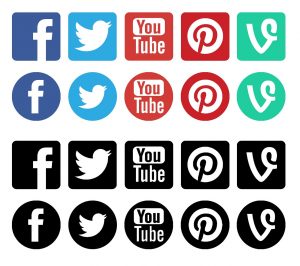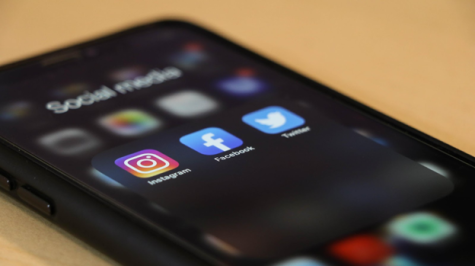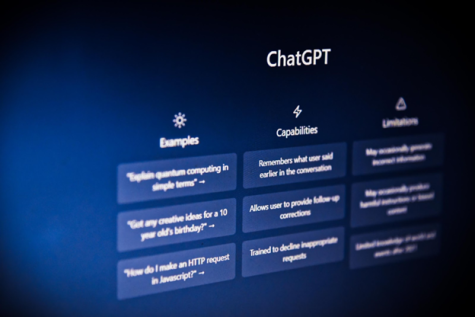The Modern Reign of Social Media
“Almost 25% of adolescents believe that social media has a mostly negative effect” (center4research).
When’s the last time you opened Instagram to check up on your favorite artist’s new posts or snapped a selfie on Snapchat to post on your story?
The use of social media has skyrocketed in the recent decade and is continuing to grow today, along with rates of mental health conditions like anxiety and depression. Despite this tight correlation, we can still ask ourselves how closely these pieces of information are related. For example, it is unclear whether social media is causing anxiety and depression or if those who experience them are more likely to use social media.
A 2020 study where people deactivated their Facebook for a month gives us more insight into this question. The results of this study were lower depression and anxiety and feeling happier overall (Center4research). Jill Emanuele, Ph.D., Senior Director of the Mood Disorders Center at the Child Mind Institute, said that “Kids view social media through the lens of their own lives.” 1 in 3 girls struggle with body image issues, and 14% of boys who use Instagram. — center4research.org
This data also gives us more insight into how younger users interpret what is on social media. Within ten years (2007-2017), suicide rates of ages 10-24 have gone up by 56%, which makes us wonder if the growth of social media has contributed to this (NCmedicaljournal). Mental health screening and intervention are used by Facebook and Instagram (NCmedicaljournal). The technology aims to detect signs of mental illness based on social media, but—as of 2017–it is unclear how effective this is, considering its recency (ScienceDirect). While there are several positive aspects of social media, such as making new connections, staying connected with others, and receiving and providing support for others, there are also several negative facets that can be harmful to users.
Social media is widely accessible for younger children growing up with screens that can promote risky behaviors and speech. Cyberbullying is a widespread issue with early social media usage among youth. It occurs when harmful things are directed to or about someone. Social media can also make it harder for parents or friends to see that someone close to them struggles outside of how they appear online.
A lack of sleep caused by social media can lead to depression and anxiety. According to center4research.org, “Adolescents report that they use social media at night, even when it affects their sleep.” Self-image and body image are also significantly impacted by social media. It is effortless for users to compare themselves to images that are edited. Accounts and images that promote a particular body image or lifestyle are also common. 1 in 3 girls struggle with body image issues, and 14% of boys who use Instagram. Instagram is aware of these statistics. Sasha, a junior in high school, spoke about how the reality behind a post does not always impact engagement with it. Sasha knew a girl who had an eating disorder and went to a treatment center. Several people liked them despite knowing what she was going through when she had posted older photos. Sasha said, “It’s like we were saying, ‘Good job.’” Sasha also felt “horrified” at herself for feeling jealous when seeing the post at first.
Yet, what makes it so hard for us to take social media breaks with all of these outcomes?
As mentioned, social media helps us make new connections, stay connected, and receive and provide support. Research shows that those who identify as LGBTQ+ are more likely to have online friends who offer emotional support than those who do not identify as LGBTQ+. As also stated by the NC Medical Journal, “In general, there is a range of potential benefits associated with social media use, including possibilities for humor and entertainment, identity exploration, and creative expression.”

Posting and interacting with positive content is one reason users like social media. However, staying off of social media can be difficult, whether we benefit from it or not. Jacob, a 15-year-old teenager, described seeing posts by his friends, “It’s like you know it isn’t making you happy, but you still look” (childmind). There is pressure for adolescents to be active on social media to maintain in-person relationships even at night. This pressure can lead to lack of sleep and is related to FOMO (Fear of Missing Out), which adolescents also experience due to social media, whether responding to a message or not being invited somewhere. FOMO can also be heightened by the feature on most social media platforms where stories expire after 24 hours.
Below is the National Center for Health Research’s list of “Tips for managing social media use.”
- Pick a time at night after which you will not check your phone, and if possible, recharge your phone in another room while you sleep.
- Use an alarm clock instead of relying on your phone as an alarm to prevent you from using your phone the minute you wake up.
- Choose one day a week to take a day off from social media and focus on other things.
- Turn off your notifications for at least a few hours each day (which you can gradually increase); put your phone in “Airplane” mode or “Do Not Disturb.”
- Set boundaries or only certain times when you can check your notifications.
- Take a break from apps that you notice contribute to unhealthy body image or feelings of inadequacy. Instead, you can try apps meant to help you feel better about yourself, such as meditation apps.
- Use apps that block certain other apps and tell you about your usage. This will help to increase your awareness of how much you are engaging with social media and help you focus on other activities.
- Start a habit of placing your phone near the door when you come home — doing it with a friend, partner, or family member can help you stay motivated and accountable! Make a plan with a group of friends to spend more time hanging out in person and less time interacting via social media.
- Consider putting your phone in grayscale. This makes your phone less enticing to look at. With the colorful apps and notifications changed to gray, they may be easier to ignore.
If you are struggling with depression or anxiety, please
Call or Text: 301.738.2255
Chat: https://suicidepreventionlifeline.org/chat/
Sources:
- Jacobson, Rae. “Social Media and Self-Doubt.” Childmind.org, childmind.org/article/social-media-and-self-doubt/. Accessed 23 Nov. 2021.—. “Social Media and Self-Doubt.” Childmind.org, childmind.org/article/social-media-and-self-doubt/. Accessed 23 Nov. 2021.
- Mir, Elina, et al. “Social Media and Adolescents’ and Young Adults’ Mental Health.” Center4research.org, www.center4research.org/social-media-affects-mental-health/. Accessed 23 Nov. 2021.
- Wallace, Jennifer Breheny. “Instagram is even worse than we thought for kids. What do we do about it?” Washingtonpost.com, 17 Sept. 2021, www.washingtonpost.com/lifestyle/2021/09/17/instagram-teens-parent-advice/. Accessed 25 Nov. 2021. “Detecting depression and mental illness on social media: an integrative review.” Sciencedirect.com, Dec. 2017, www.sciencedirect.com/science/ article/pii/S2352154617300384?via%3Dihub. Accessed 28 Nov. 2021.











